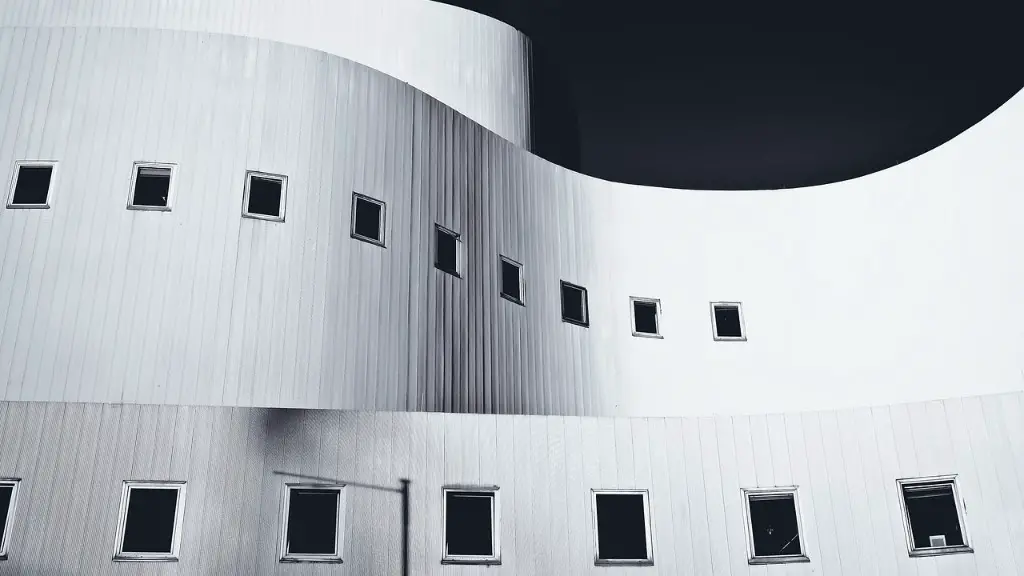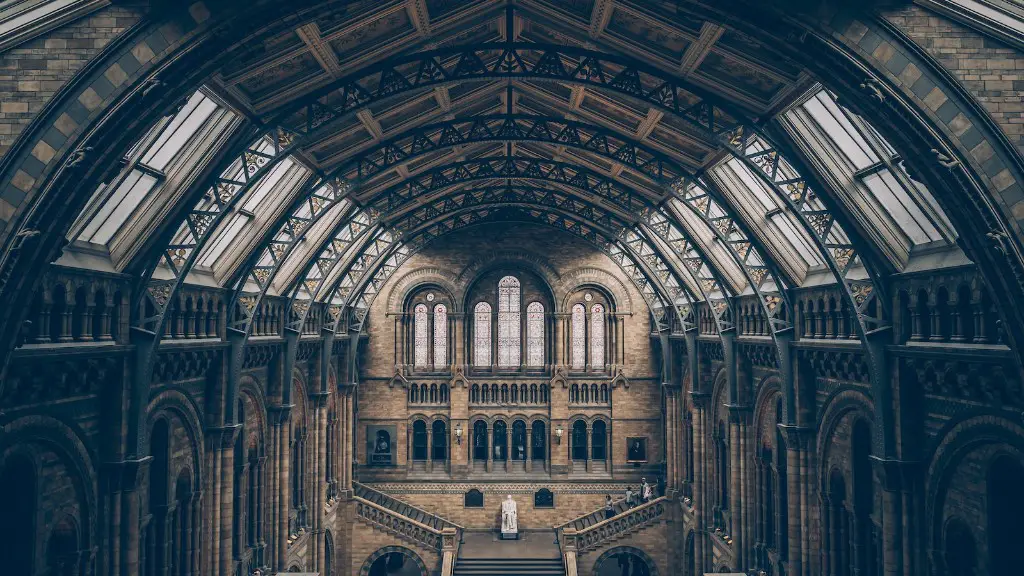The Impact of Design
Architecture can affect our mood, how we perceive a space, and even how we interact with it. It can be seen as a bridge between the built environment and the feelings of those who inhabit it. Architects use elements such as color, shape, light, and materials to give a certain atmosphere to each space. Furthermore, the history and culture that is present within the architecture impact how we perceive it. These elements influence our perception of not only the building, but what it stands for and how we interact with each other within it.
Various studies have been conducted to assess the effect that architecture has on us, from the choice of materials which can have an impact on the emotions of those living in it, to the design features which can influence how the inhabitants use the space. For example, curved walls create a more inviting effect than sharp corners and can be used by architects to promote a certain feeling in their design.
The choice of materials when constructing a building also plays a significant role in the emotions generated within a natural space. The use of natural materials like wood, for instance, is often associated with positive emotions and can be used by architects to engender this feeling in a space. On the other hand, the use of synthetic materials, such as plastic, can create a feeling of alienation and a lack of connection with nature.
Not only do materials have an impact on the emotions generated within a space, but even features such as the addition of windows and natural lighting can affect how we interact and perceive the space. Natural lighting can provide positive energy in a way that artificial lighting does not and this could enhance the feel of a place. Furthermore, the windows can provide a connection between the interior and exterior, again fostering a feeling of comfort.
The impact of colour is another factor that should be considered when creating a space. Different shades of colour can evoke certain feelings, such as calmness or intensity. In some cases, architects use special paint finishes to create a certain atmosphere. For example, textured paint finishes used in hospitals can provide a calming atmosphere in an otherwise hectic environment.
Moreover, the layout of the building can define how we use the space. Passageways can encourage us to interact with one another, while open spaces can provide us with the opportunity to explore. Architects use the layout of a building to promote a certain feeling and to encourage a certain type of behavior.
From the choice of materials to the layout of the building, architecture has a significant impact on what sorts of emotions we experience and how we interact with a space. When assessing the effect a building has on us, it is important to consider the various elements that are involved in the design.
Harmonizing Humans with Nature
Architects have long sought to connect their designs with nature, both to gain an appreciation of the environment and to create a sense of harmony with nature. This is evident in the use of natural materials, such as wood, as well as incorporating natural elements, such as water and vegetation, into the design. These elements are not just aesthetically pleasing, but they also offer a connection to nature which can be experienced by the user.
Incorporating natural elements in the design of a building can also provide psychological benefits to users. Studies suggest that being in contact with nature can improve wellbeing, reduce stress and improve concentration. In addition to this, natural elements can also reduce energy consumption, making buildings more energy-efficient.
Not only do natural elements improve a user’s wellbeing, but they also provide environmental benefits. Incorporating sustainable materials, such as recycled wood, can reduce energy consumption and decrease the environmental impact of the building. Sustainable materials are also low in toxins and VOCs, making them healthier for occupants. By integrating these materials into a building, architects are able to create a space that is not only healthy but also sustainable.
One example of how nature is being incorporated into architecture is green roofs. Green roofs are roofs that are covered with vegetation or other natural elements. They provide a number of benefits, such as reducing energy consumption and improving air quality. In addition to this, green roofs can also improve the aesthetic of a space and provide a connection to nature.
Architects can also use design to conserve energy and reduce waste. Choosing materials that are renewable, recyclable, and durable can help reduce the environmental impact of construction. Furthermore, adding insulation to a building can reduce energy consumption and help keep the building more comfortable for occupants. Lastly, incorporating natural lighting, such as sun tunnels and skylights, can reduce the need for artificial lighting and conserve energy in the process.
Social Impact of Architecture
Architecture can also have a significant impact on society. Buildings can be designed to encourage collaboration and interaction; however, they can also be designed to discourage this. Furthermore, the design and layout of a building can influence the way in which people move about and interact with the space.
Moreover, the design of a building can also influence how people perceive and interact with one another in a space. For example, curved designs create a more inviting atmosphere and encourage people to communicate, while sharp corners can create an intimidating atmosphere and deter conversation. In addition to this, the choice of materials can also influence how people perceive a space, with certain materials creating a sense of calm and others creating a sense of alienation.
The choice of color within a building can also have an effect on how people perceive it. Different shades can evoke different emotions and can be used to create different atmospheres. For example, bright colors can create a lively atmosphere and encourage social interaction, while dark colors can create a sense of atmosphere and allow for a more reflective experience.
Furthermore, the use of public and private spaces can affect how people interact with each other in a space. Public spaces are often open and encourage people to gather and interact while private spaces provide an opportunity for individuals to be alone. Architects can use these public and private spaces to promote certain types of behavior.
Lastly, the location of a building can also influence how it affects people. Buildings in busy urban areas tend to be more imposing and environment-focused buildings may encourage people to engage with nature. Thus, the location of the building can have a significant impact on how it affects people.
The Importance of Architecture
Architecture is a powerful tool that can be used to evoke certain emotions, create a certain atmosphere, and even influence our behavior. It is important that architects consider the various impacts that architecture can have on people when designing a building. Furthermore, it is important to consider the environmental impact of a building and how it can be designed to be as sustainable as possible.
Architecture can also be used to create public spaces that encourage social interaction and collaboration. It is important to design spaces in a way that promotes this type of behavior while taking into account the needs of the occupants. Not only will this create a more enjoyable experience for the occupants, but it can also help build stronger communities.
In conclusion, architecture can have a profound impact on how we interact with a space and how we perceive it. Architects must consider the various elements that contribute to the design of a building and how they can affect our experience. They must also consider how they can use design to create public spaces that promote social interaction and reduce energy consumption. By taking these factors into consideration, architects can create spaces that are both inviting and sustainable.
Aesthetic Value
In addition to the practical and environmental impacts of architecture, it can also have an aesthetic value. Aesthetics can be defined as “the study of beauty, or the philosophy of art”. Thus, when designing a building, it is important to consider how it can be aesthetically pleasing. Architectural design has the ability to evoke emotion, creating a feeling of beauty and awe.
The use of color and natural elements are two key elements that can add to the aesthetic of a building. For example, the use of vibrant colors can make a space more inviting, while natural materials can bring a sense of warmth to a room. In addition to this, the use of light can be used to create atmosphere, whether it be natural or artificial light sources. Furthermore, the design of a building can also have an impact on its aesthetics. For example, curved designs can be used to evoke a sense of softness, while sharp edges can evoke a more industrial feel.
Furthermore, the use of art in architecture can also be used to influence the aesthetic value of building. The use of sculptures, mosaics and other forms of art can add to or detract from the aesthetic of a space. Architects must consider how art can be used to enhance the experience of the user and create a certain feeling.
Lastly, designers must also consider how their design will be viewed by the public. The design of the building must be pleasing to the eye and should be recognizable to those who see it. Moreover, public art can be used to create a certain aesthetic which may be associated with a particular city or area.
An Emotional Connection
The impact of architecture on us goes beyond just aesthetics. It is also about creating an emotional connection with the space. Through the use of materials, color, light and art, architects can create a space that is not only aesthetically pleasing, but also emotionally engaging.
By considering the various elements involved in the design of a building, architects can craft an experience that is both enjoyable and meaningful. For example, the use of natural materials, such as wood, can create a soothing atmosphere while also invoking a sense of groundedness and connection to nature. Similarly, the use of light can create a certain atmosphere that is comforting and inviting.
The addition of art and sculptures can also help create an emotional connection with a space. These elements can evoke certain emotions and provoke thoughts and conversations. Furthermore, these elements can also create an atmosphere of contemplation and reflection.
In addition to this, the use of sound can also be used to create an emotional connection. The use of sound such as music, birdsong and running water can evoke certain emotions and create a feeling of peacefulness. This is often combined with the addition of natural elements, such as plants and trees, to create an atmosphere that encourages relaxation and contemplation.
Ultimately, architecture can create an emotional connection between the user and the space. By considering the various elements that go into the design, architects can create a meaningful experience that is both aesthetically pleasing and emotionally engaging.





